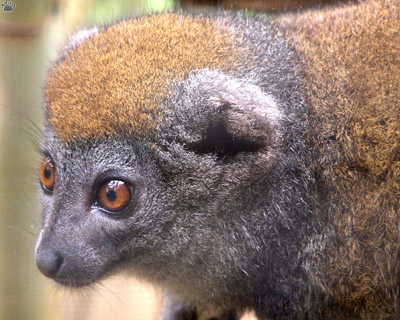
Eastern gentle lemur (Hapalemur griseus griseus), Parc National Marojejy, Madagascar.
Madagascar - Part 3
Watching some lemurs makes you suspect that the sole purpose of their evolution was to achieve perfection in cuteness. No man-made toy gets even close.
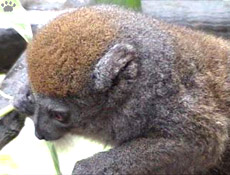 |
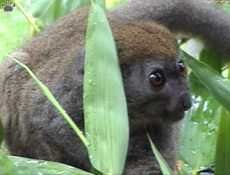 |
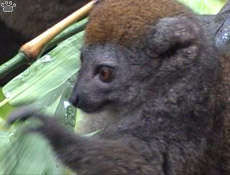 |
| Eastern gentle lemur, Parc National Marojejy (left photo) and Alaotra gentle lemur (H. g. alaotrensis), Lake Alaotra. |
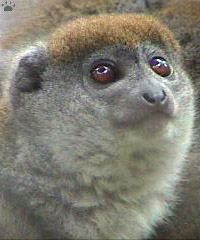
Western gentle lemu r (H. g. occidentalis),
Parc National L'Ankarana. |
If my theory is correct, gentle bamboo lemur should be the pinnacle of lemur evolution. This fairy tale character is not only impossibly soft and cuddly, it is also surprisingly adaptable. Of all extant lemurs, it's the only one to colonize a completely treeless habitat: one subspecies inhabits extensive reedbeds around Lake Alaotra. Two other species of Hapalemur usually don't leave bamboo groves, where they feed on leaves and shoots. Nowadays they are mostly confined to Parc National Ranomafana in southeastern Madagascar. |
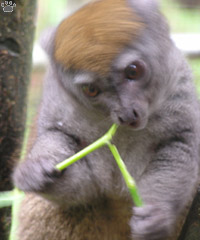
Northern gentle lemur (H. g. septentionalis),
Parc National Montagne d'Ambre. |
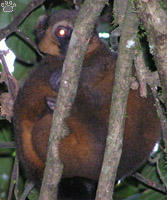 |
 |
 |
 |
| Golden bamboo lemur (H. aureus), Parc National Ranomafana. |
Greater bamboo lemur (H. simus), Parc National Ranomafana. |
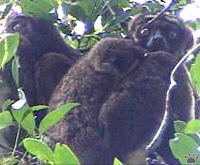
Eastern avahi lemurs (Avahi laniger) with
a baby, Parc National Andasibe-Mantadia. |
More than two thirds of Madagascar's lemur species are nocturnal. Avahi, or woolly, lemurs are relatives of indri and sifakas and also feed mostly on leaves. During the day, they hide in hollow trees or dense foliage. Unlike other lemurs, they are monogamous, and often found in pairs. At night, they usually stay high in the canopy, but can be found by their loud, whistling contact calls.
|
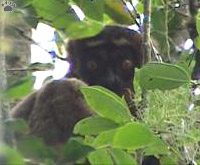
Western avahi lemur (A. occidentalis),
Parc National L'Ankarafantsika. |
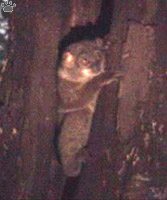 |
 |
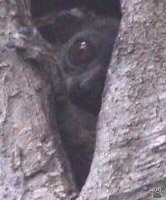 |
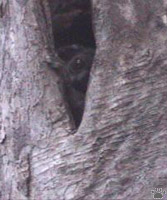 |
| Grey-backed sportive lemur (Lepilemur dorsalis), PN L'Ankarana. |
Milne-Edwards' sportive lemur (L. ewardsi), PN L'Ankarafantsika. |
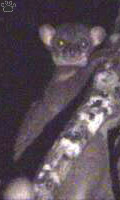
Small-toothed sportive
lemur (L. microdon),
PN Ranomafana. |
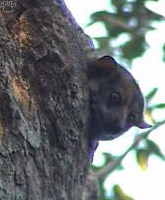
Red-tailed sportive
lemur (L. ruficaudatus),
Reniala Nature Reserve. |
Sportive lemurs are so called for their leaping abilities. There are 7-10 species, all very similar, but with non- overlapping ranges. They are leaf-eaters, solitary and very territorial. |
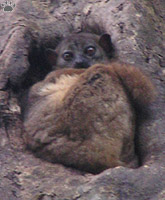
Weasel sportive lemur
(L. mustelinus),
Parc National Masoala. |
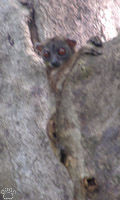
Northern sportive lemur
(L. septentrionalis),
PN Montagne d'Ambre. |
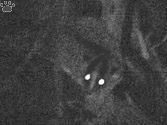
Eastern fork-marked lemur (Phaner
furcifer furcifer), PN Masoala. |
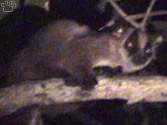
Pale fork-marked lemur (Ph. f.
pallescens), Kirindi Nature Reserve. |

Western fat-tailed lemur (Cheirogale
medius), PN d'Ankarafantsika. |
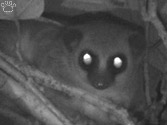
Southern fat-tailed lemur (Ch.
adipicaudatus), Reniala NR. |
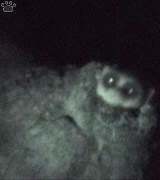
Greater iron-grey lemur (Ch. ravus),
Masoala NP. |
Fork-marked lemur inhabits forest canopy, where it feeds on nectar, tree gum and honeydew (aphid secretions). It is very vocal and easy to follow by its soft calls. Its close relatives are fat-tailed lemurs. There are probably at least seven species of them. All become much less active in winter, and some hibernate from April-May to October-November. Before hibernation, they store fat in their tails. Fat-tailed lemurs feed on fruit, flowers and insects. They are very territorial, and build ball-shaped nests in hollow trees or in tree tops. Old nests are often used by forked-marked lemur. |
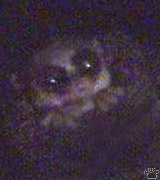
Furry-eared lemur (Ch. crossleyi),
PN Andasibe-Mantadia. |
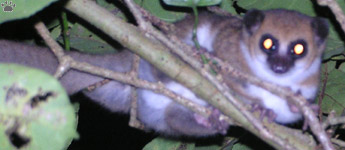 |
 |
| Greater fat-tailed lemur (Ch. major), Parc National Montagne d'Ambre. |
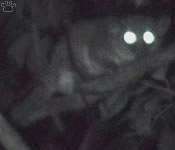
Coquerel's dwarf lemur (Mirza coquereli),
Kirindi Nature Reserve. |
Mouse lemurs live in dense forests, where they prefer undergrowth and low trees, usually 1-6 m above ground. In some places you can see eyeshine of up to 20 animals per hour during night walks with a spotlight. The number of described species has grown from 6 to 12 since 1999. Interestingly, all new species were found in well-studied and easily accessible Nature reserves, where it's not difficult to see them in one-two nights. |
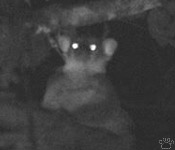
Northern dwarf lemur (Mirza zaza) was
described in 2005. PN d'Ankarafantsika. |
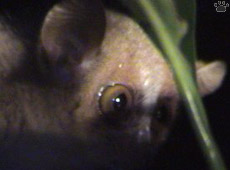 |
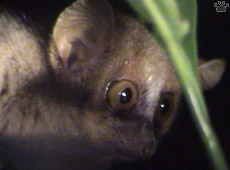 |
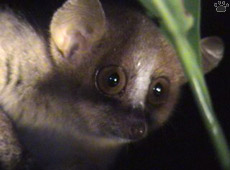 |
| Russet mouse lemur (Microcebus rufus), Parc National Andasibe-Mantadia. |

Pygmy mouse lemur (M. myoxinus),
Kirindi Nature Reserve. |
Watching mouse lemurs is a wonderful part of a trip to Madagascar. If your flashlight is not too strong, they soon get used to it, so you can sometimes follow them as they run around, hunting insects and investigating everything. In places where bird feeders with fruit are used, they soon learn to visit them at night. Knowing that some of them might be still unknown to science adds to the fun. Recently described species include Microcebus berthae (below), the world's smallest primate. It is the size of a large chicken egg, and weighs 3-5 g. I suspect that mouse and fat-tailed lemurs are closer to African bushbabies than to other Madagascar lemurs. |
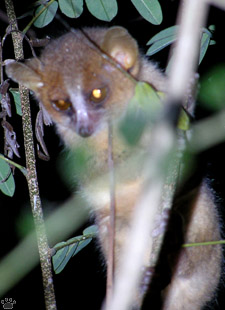
Golden mouse lemur (M. ravelobensis),
Parc National L'Ankarafantsika. |
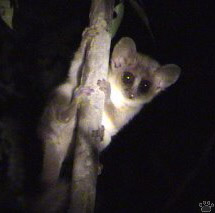
Gray mouse lemur (M. murinus), Kirindi. |

Northern mouse lemur (M. tavaratra), L'Ankarana. |
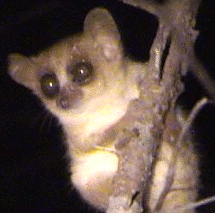
Tiny mouse lemur (M. berthae), Kirindi. |

Grey-throated mouse lemur (M.
griseogularis), Reniala NR. |
Mouse lemurs are omnivores, eating everything from fruit and nectar to insects and small frogs. Larger dwarf lemurs (Mirza) are active all year, but smaller Microcebus species are noticeably more difficult to find in cold nights and at the height of dry season, when they live off the fat reserves in their tails. Hairy-eared lemur, a rare high-elevation species, usually hibernates from May to October. But the photo to the right is the evidence that some can still be found in early June. |
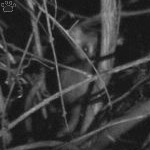
Hairy-eared lemur (Allocebus
trichotis), PN Marojejy. |
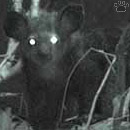
Aye-aye (Daubentonia madagascarensis), Masoala. |
Madagascar has a lot of weird creatures, but few are as weird as aye-aye. Technically a lemur, it has adapted to the ecological niche of a woodpecker. Instead of woodpecker's bill and long tongue, it has beaver-like incisors and very long middle fingers. Aye-aye is not rare, but few people have seen it in the wild. In some reserves, it hasn't been seen for decades, but snags and dry logs are dotted with aye-aye holes. It is very agile and looks like a giant squirrel when it moves through canopy. How it avoids damaging its fingers, I don't know. In addition to insects, it feeds on coconut milk and other plant matter. |
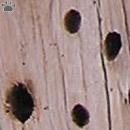
Holes in a dry tree stump left
by an aye-aye, PN Marojejy. |
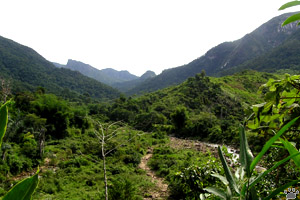
Aye-aye habitat at forest edge, Parc National Marojejy. |
Part 4: Other Mammals
Back to Part 2
Home
|